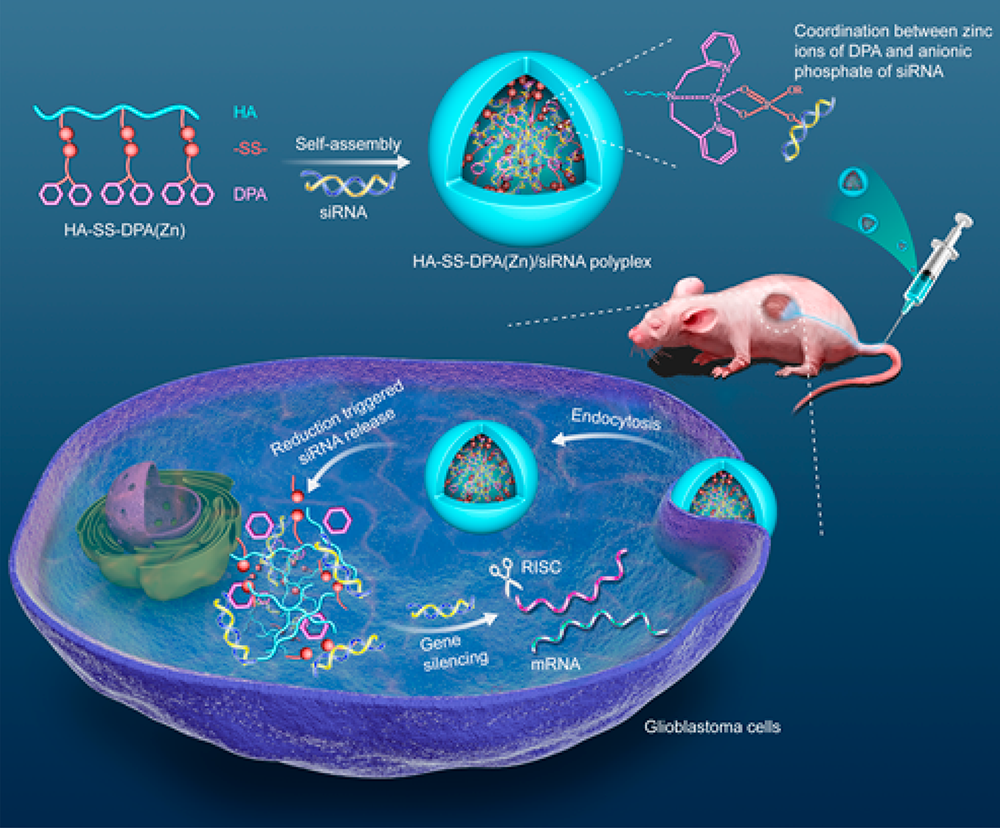Abstract
RNA interference (RNAi) is an emerging therapeutic modality for tumors. However, lack of a safe and efficient small interfering RNA (siRNA) delivery system limits its clinical application. Here, we report a bioreducible and less-cationic siRNA delivery carrier by conjugating Zn(II)−dipicolylamine complexes (Zn−DPA) onto hyaluronic acid (HA) via a redoxsensitive disulfide (-SS-) linker. Such polymer conjugates can formulate stable siRNA nanomedicines via coordination between zinc ions of DPA and the anionic phosphate of siRNA. After the conjugates are taken up by cells, intracellular reduction stimulus subsequently triggers the release of siRNAs and elucidates the desired RNAi effect. Our studies showed the formulated siRNA nanomedicines can be efficiently delivered into tumor cells/tissues and mediates less cytotoxicities both in vitro and in vivo. More importantly, when applied in a xenograft glioblastoma tumor model, this siRNA nanomedicine demonstrated significantly enhanced antitumor ability comparing to naked siRNA. This work demonstrates that such bioreducible Zn−DPA-functionalized HA conjugates without using cationic material as a siRNA carrier represents a promising direction for RNAi-based cancer therapy.

ACS Appl. Bio Mater. DOI: 10.1021/acsabm.8b00622
